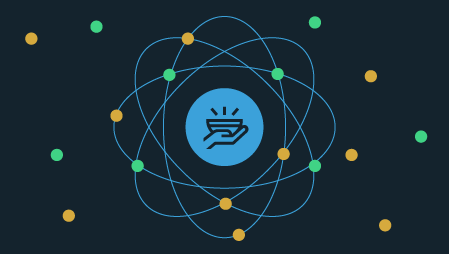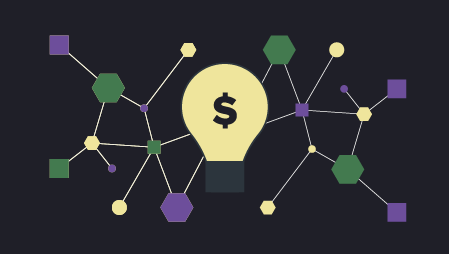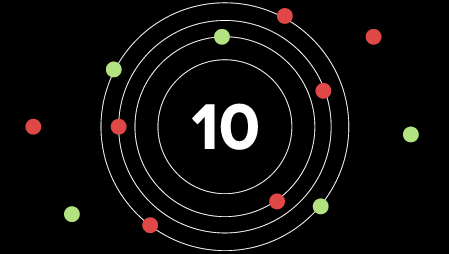Ready to learn more on IoT and Blockchain? Browse courses on IoT and Blockchain developed by industry thought leaders and Experfy in Harvard Innovation Lab.
Needless to say, Bitcoin – as well as blockchain, the technology on which Bitcoin is based – is receiving a lot of attention these days. The daily market value of Bitcoin is increasingly being followed as if it were the Dow or S&P 500. Blockchain start-ups promising to radically disrupt the financial services, energy, and other industries with new revolutionary “smart contracts” and “transactive services” seem to be launching every day. Technology and business media outlets all seem to have stories published about how blockchain is the “Next Big Thing” because it will transform commerce by replacing various middlemen with secure, peer-to-peer transactions.
Given all this noise, how concerned should professionals in the IoT industry be about blockchain? Will it prove to be as disruptive to the IoT as e-commerce was to retail, the sharing economy was to the taxi and hotel industries, and the cloud was to the legacy IT infrastructure market? Are we on the cusp of seeing blockchain become the preferred technology for transactions involving IoT devices? If you are in the IoT industry, is it time to be worried if you do not have a blockchain strategy yet?
The short answer? No. While I can’t speak for other industries, I think almost everyone in the IoT industry can relax and not be concerned about finding themselves displaced by some blockchain-based disrupted tomorrow. There are significant technology and business issues that will, at the very least, limit blockchain’s penetration into IoT markets over the short term. These issues include:
Distribution of the Ledger
Much of the value of a blockchain over a traditional ledger, maintained and secured by a central authority, derives from massive distribution of the ledger itself – all participants in the blockchain hold a copy of the ledger, making it practically tamper-proof. IoT devices, especially deep edge devices with constrained power, storage, and bandwidth capacities, will be unable to store a copy of the ledger; the Bitcoin ledger is currently 149GB and growing at approximately 40GB per year, held back only by the slow transaction rate. A high-performance blockchain with billions of IoT endpoints would grow much faster. The net result is that most IoT devices will only be indirect participants in any blockchain, with transactions funnelled through some form of aggregation service.
Distribution of Mining Power
The second feature of a blockchain that helps ensure the integrity of the ledger is massive distribution of mining power. If any one entity gains control over the majority of mining power, that entity can rewrite the blockchain. Many so-called “private blockchains” consolidate mining power to a small number of entities which creates more opportunity for abuse of power.
Slow Transaction Speeds
For blockchain to work for IoT, transactions must be confirmed almost instantaneously. The proof-of-work model employed by the Bitcoin blockchain results in transaction confirmation times averaging about 10 minutes but often taking several hours. Proof-of-Stake models combined with directed acyclic graph (DAB) techniques promise to reduce these transaction times dramatically, but depending on how massively distributed the ledger is, it could still take significant time for the ledger to converge system-wide.
Lack of a Business Need
Perhaps the biggest issue with blockchain for IoT markets is that it’s a solution in search of a problem. What value does a distributed ledger provide to a given business application? Who will do the mining and how will they be compensated? How will deep edge devices interact securely and efficiently with the actual blockchain infrastructure?
When IoT developers consider blockchain, they should first sit back and ask themselves the basic question we ask about any new technology – “what problems will it solve for us?” If the answer is “nothing we can think of” then it is probably safe to put blockchain on the back burner, at least for now.
Despite these issues, blockchain could hold some potential for the IoT, particularly in relation to applications involving peer-to-peer transactions. For example, start-ups such as LO3 Energy are using blockchain for microgrid energy transactions between different buildings that have IoT-enabled smart meters installed to measure these buildings’ energy production and use. As mentioned above, if transactions are core to an IoT application, it probably does make sense to investigate if blockchain can solve some of the technology or business problems associated with the application, or if it can enable a peer-to-peer transaction model that delivers real business benefits.
However, given the significant gaps related to incorporating blockchain into IoT applications, as well as the limited number of IoT problems it solves, most developers can maintain a “wait and see” attitude towards blockchain. In the future, if there are technological innovations that make blockchain more effective or increase its benefits, it might become more relevant to the IoT – but that day is not here yet.
Originally published at Sierra Wireless



